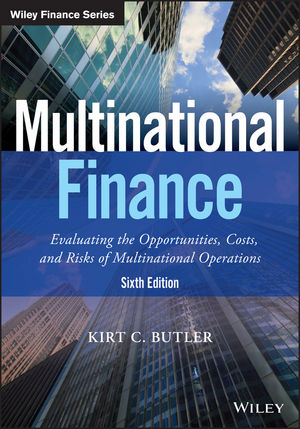Test Bank Multinational Finance Evaluating the Opportunities, Costs, and Risks of Multinational Operations, 6th Edition
Chapter 3- Kirt C. Butler, Test Bank for Multinational Finance, John Wiley & Sons, 6h edition (2016)
Chapter 3 Foreign Exchange and Eurocurrency Markets
Notes to instructors:
Answers to non-numeric multiple-choice questions are arranged alphabetically so that answers are randomly assigned to the five outcomes.
True/False
1. Liquidity refers to the ease with which you can exchange one asset for another of equal value.
True.
2. Internal credit markets are markets for deposits and loans by local residents and hence are governed by the rules and institutional conventions of the local government.
True.
3. External credit markets trade interest rate contracts denominated in a currency but traded outside the borders of the country issuing that currency.
True.
4. Money markets are markets for financial assets and liabilities of short maturity, considered to be less than one year.
True.
5. Capital markets are markets for financial assets and liabilities with maturities greater than one year.
True.
6. Eurocurrency markets are highly liquid and relatively unencumbered by government regulation, resulting in borrowing and lending rates that are generally more favorable to large retail customers than domestic rates.
True.
7. International commercial banks are the major market makers in the currency markets.
True.
8. The most active market makers in the market for spot foreign exchange are the major investment banks, such as Salomon Smith Barney and Goldman Sachs.
False. The major market makers are the large commercial banks.
9. In the spot market, trades is conducted in a single spot or location.
False. Trade is conducted at commercial banks worldwide.
10. In the forward currency markets, trades are made for future delivery according to an agreed-upon delivery date, exchange rate, and amount.
True.





Reviews
There are no reviews yet.